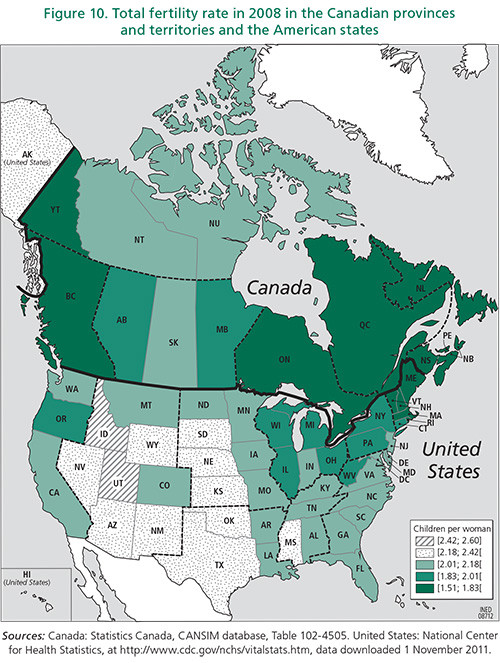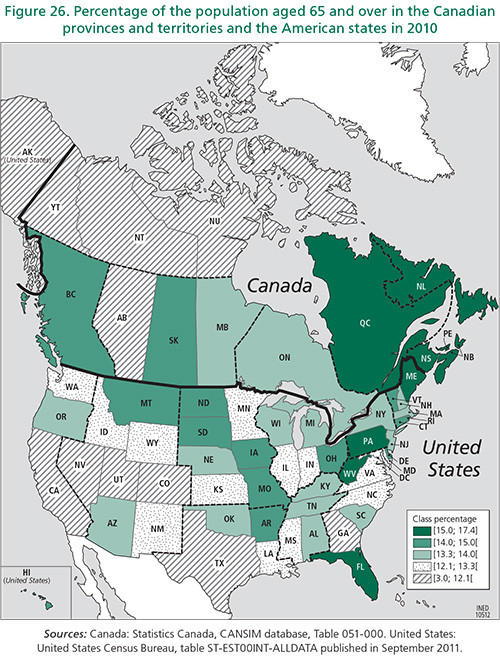Demographic situation of Canada and the United-States
The demography of Canada and the United States from the 1980s to the 2000s

Since the early 1980s, the demography of Canada and the United States has been quite dynamic.
In Canada, the greater part of demographic growth is due to a
sharply positive immigration increase rate. Fertility has
stabilized in the last thirty years at slightly over 1.5 children
per woman while mortality has continued to decline, with male life
expectancy at birth attaining 78 years and female, 83 years in
2007. These levels imply gradual population ageing; the mean age of
the population rose 7 years between 1980 and 2007. Approximately
one person in seven is 65 years or over today in Canada. Natural
increase is low, though still above zero, standing at 4 per 1,000
in 2008-2009,to which must be added a migratory increase of 9 per
1,000; total demographic increase therefore continues to be strong
(nearly 1.3% per year), particularly in comparison to what it is in
European countries.

Total growth is slightly lower in the United States (0.9%), but the role of natural increase is greater due to a higher fertility rate, close to the threshold for generation replacement. The current difference in fertility rates between the two countries is explained primarily by much higher rates in the US than in Canada among women under 30 years of age. Mortality in the US is also higher: male life expectancy at birth stood at 76 years and female at 81 years in 2009. The United States receives the greatest number of immigrants in the world, with around 1 million new entrants per year, but related to its population this figure represents an immigration rate half the size of Canada’s, where one person in five was born outside the country, as opposed to one in eight in the United States.

Recent fertility, mortality and international migration trends in the two countries of North America guarantee them a more dynamic demographic future than for the vast majority of other high-income countries, with populations that will continue to grow, though less and less vigorously over the next forty years, and a demographic ageing process that will be slower in the United States than elsewhere. The most acute demographic problem in these countries today, then, is not, as it is in Europe, a foretold population decline but rather geographic and social inequalities. These have grown continuously since the early 1980s and are reflected in particular in considerable disparities in health and mortality between regions and social group.
Source: Magali Barbieri et Nadine Ouellette, 2012, The Demography of Canada and the United States from the 1980s to the 2000s, Population-E, 67 (2)
Contact: Magali Barbieri et Nadine Ouellette
Online: December 2012
Links for more info
-
The Population of the World (2017) [Publication]
-
Population trends in the United States and Europe: similarities and differences [Publication]
-
All countries [Database]
-
The world population [Multimedia]
-
The world population and me [Game]
-
World Population Maps [Multimedia]
-
Imagine the population of tomorrow [Multimedia]
